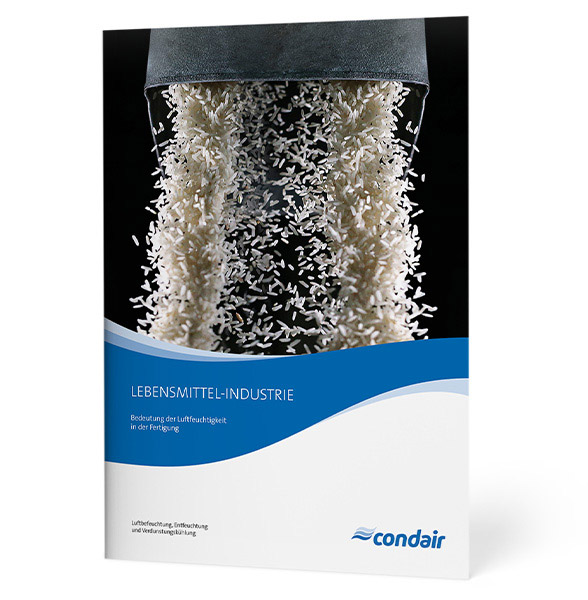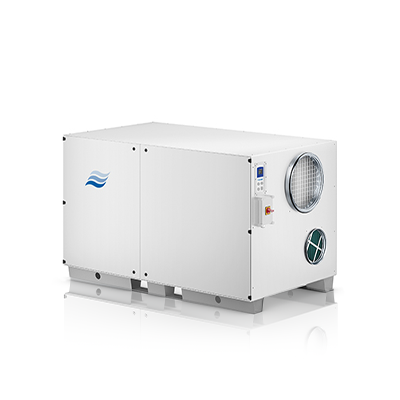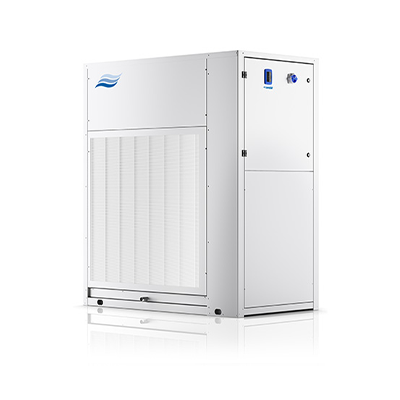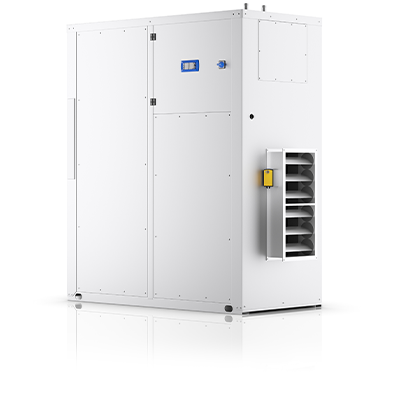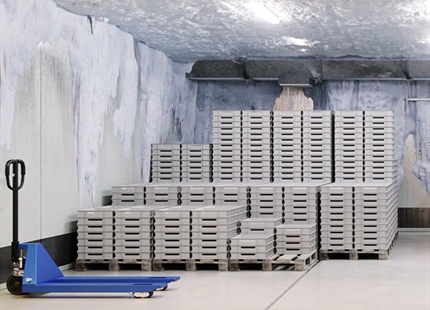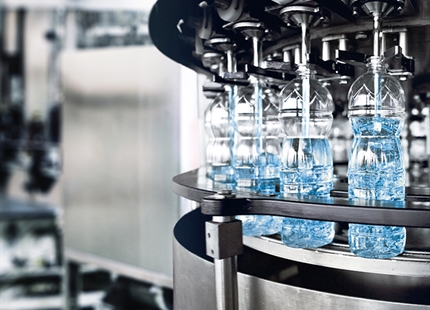Air Dehumidification in Conveyor Technology
Regardless of the industry, high conversion speeds, optimum coordination between the individual elements and, above all, reliable functionality are essential quality features of dynamic process technology. The quality of the conveyor technology within the individual process segments plays an essential role here. To uphold this over the long term, external disturbance factors, such as high or significantly fluctuating air humidity, must be systematically excluded. Dehumidification systems based on contemporary condensation or adsorption technology provide the optimal conditions in which to do so. They ensure that condensation does not turn into corrosion on essential conveying elements, but above all that bulk materials retain their flowability and general cargo does not stick or adhere.
They are therefore indispensable for the efficiency of production processes and thus also for the manufacture of competitive products.
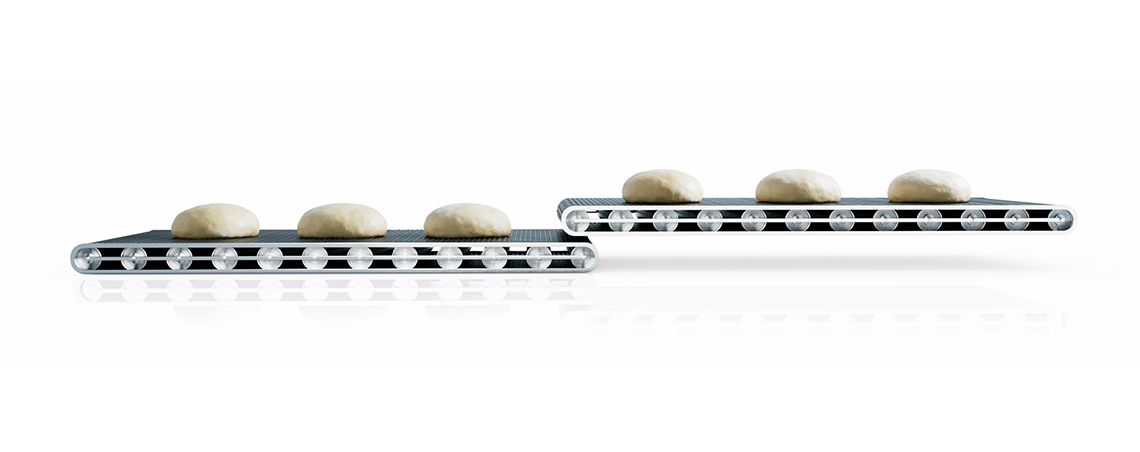
Preventing General Cargo from Adhering to Conveyor Belts
An unhindered, consistently strong production flow of the conveyor and transport paths used is an essential component of process quality here. If the area surrounding these paths is not sufficiently dehumidified, adhesion or sticking of the products to the conveyor belts or clogging of the conveyor paths due to the formation of lumps can severely disrupt the production process. Food manufacturers can optimally control and manage their processes through intelligent dehumidification solutions.
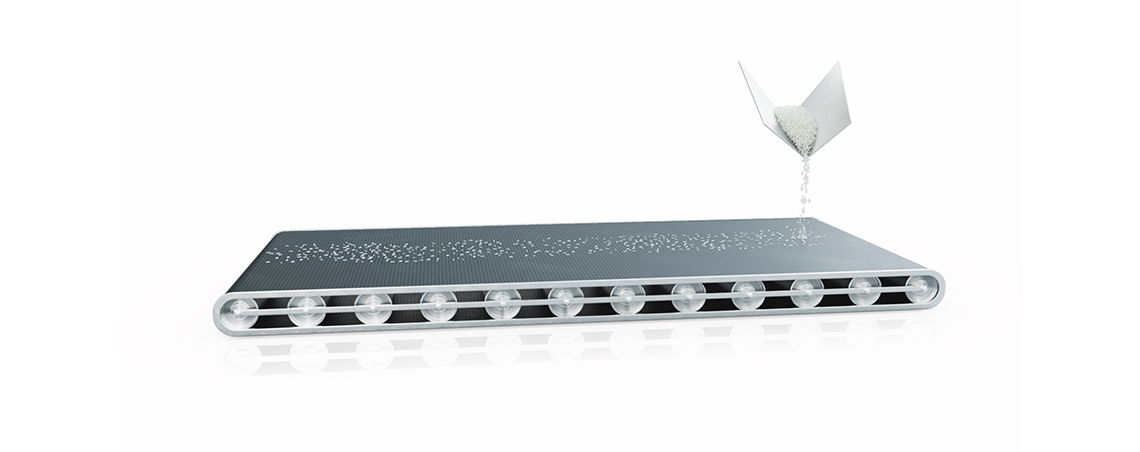
Keeping Bulk Material Pourable
Significant fluctuations in humidity or excessive humidity in general within a bulk material production environment can severely impair, or even completely nullify, the flowability of the materials to be conveyed. This is especially true for materials in granular form or those with a powdery consistency. In the chemical or pharmaceutical industry, the ambient air must be pre-dehumidified in order to prevent hygroscopic bulk materials from sticking to the belts or clogging the conveying paths through the formation of lumps. This can be reliably achieved using modern, high-tech adsorption dryers. Pre-dehumidified ambient air ensures that the raw materials maintain their flowability from initial storage in the silos through transport on the conveyor belts to final storage. This ensures that the processing quality is upheld and saves potential system cleaning costs,
making these dryers indispensable.
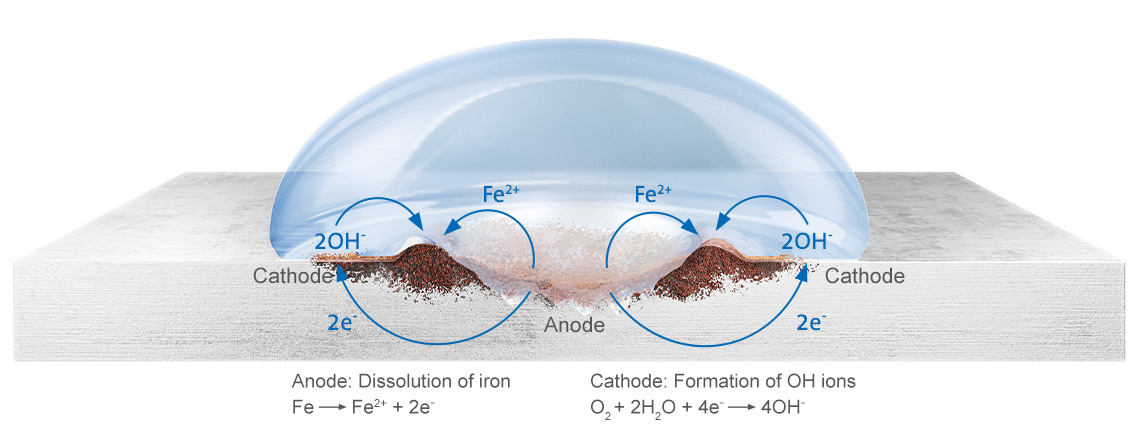
Preventing Corrosion on Conveyor Systems
When exposed to bare, dry air, iron cannot rust. However, when moisture settles on the metal, the oxygen (O2) and water (H2O) begin to react to form hydroxide ions (OH-). In order to balance the electrons needed for this reaction, the iron oxidises, i.e. it gives up its electrodes, which are then taken up by the oxygen. Iron oxide is formed during this process. Where the electrons have been removed, an electron deficiency occurs and positively charged iron atoms (Fe2+) dissolve. These migrate into the water droplet, where they merge with the negatively charged hydroxide ions (OH-). Iron(II) hydroxide is then initially formed by various charges. Further reactions with water, oxygen and hydroxide ions lead to more and more reactions, from which iron(III) oxide and iron(III) hydroxide are formed. They settle on the metal surface and give rust its typical appearance. Unlike metals such as aluminium, the process only stops when there is no more iron.
Humidity in Manufacturing
This brochure provides information on what is
important to ensure the environment is optimally conditioned,
what needs to be considered and what solutions are available.

Because professional planning is the basis for functional quality and energy efficiency, we are happy to assist you with your project right from the planning phase.
Steam bath and steam shower
Nowadays, many hotels and health clubs offer spa facilities for the well-being of their guests and members:
A swimming pool, a sauna and more and mor...
Hammam, Caldarium and Rhassoul
A hamam is a steam bath in which a special bathing ceremony is held,
and is an important part of Islamic bathing and physical culture.
The focus is...
Archives
The preservation, provision and safeguarding of manuscripts, books, graphics, pictures, documents and other works of art and culture are the most imp...
Cold storage
When storing foodstuffs such as meat and sausage products, dairy products, pasta and frozen foods, an optimum ratio between the suitable indoor tempe...
Confectionery
It is in the nature of things (based on physics) that the production, processing and storage process of confectionery primarily depends on the contin...
Food Industry
Consistent air dehumidification has become an indispensable part of the entire process environment in food production, drying and storage.
Drying sys...
Chemical industry
Whether it is a matter of binding raw materials together permanently, pulverising liquids or preventing potential side effects of reactions in applic...
Beverage Industry
Efficiently controlling humidity throughout the production and storage process environment offers companies in the beverage industry clear added valu...
Call Centers
A good room air humidity in a call center not only ensures the employees’ well-being, but also their performance and health. Today, respiratory illne...
Office Rooms
Employees must feel comfortable as they work. Motivation, efficiency, and health can be improved through contemporary design of the workplace. The ri...



